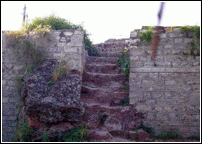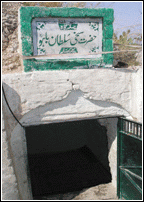Kallar Kahar, Emperor Babar's First Royal Garden

Kallar Kahar is situated in a beautiful valley in the southern hilly area of Potohar plateau in the salt range of Pakistan. No one knows the origin of this town, but in some books mention of Kalda-kahar is made, which seems to have become Kallar Kahar. The town is famous on four accounts; for one, it was here that when the first Mogul emperor of India, Zaheer ud Din Babar broke his journey from Afghanistan to Delhi and laid his first Mogul garden atop Kallar Kahar hills over looking the picturesque Kallar Kahar Lake, secondly the salt water lake located in the foothills dates back to millions of years when the Thysis Ocean rolled back, leaving behind its water bodies and mountain springs and thirdly the shrine of Skahi Sultan Bahu and lastly the peacocks...


Kallar Kahar came to limelight somewhere around 1510 AD, when Zaheer ud Din Babar, came and rested in this area. Overawed by the scenic beauty of the area, the sight of wheat fields far and wide and the stretch of lake water in the foothills, he immediately ordered the plantation of a garden and named Bagh-e-Safa, a Persian word meaning "the clean garden" for the pollution free air and lush green landscape. As for himself to sit at a vantage point and enjoy the area, a large single stone, carved out sitting place known as Takht-e-Babri, throne of Babar was built which is still present. The throne was also used to address the notables of the area and to deliver ‘order of the day’ to the troops. Although the once beautiful royal garden is in bad shape of neglect these days. However, some fruits farms of apricot and loquat are still present around the lake. Rose farming and extracting rose-water is also a centuries old industry found here.



Wild peacocks can be seen wandering around the area. Now and then their particular sound can be heard clearly. They can be best watched near the tomb of saint Sakhi Sultan Bahu at the top of the hill at dawn and sunset because caretakers of the tomb feed them at that time. The wild peacocks owe their existence due to the fact that local people believe that these birds have some relation to the spiritual figure buried here, so harming them will bring harm to them. However, the building of the motorway has cleared off thick vegetation of the area, restricting the freedom of the peacocks whose number is now fast diminishing.
Recently, recreation and picnic spots and small amusement parks have been added near the lake, which environmentalists believe are spoiling the natural beauty of the area. TDCP has also built a motel for catering and lodging of tourists at reasonable rates. Small pedal boats and specially designed motorboats are available in this shallow lake. Fishing is also popular over here. A museum of fossils of the area has also been built by the Archeology Department in the District Council Rest House.

Comments
Post a Comment